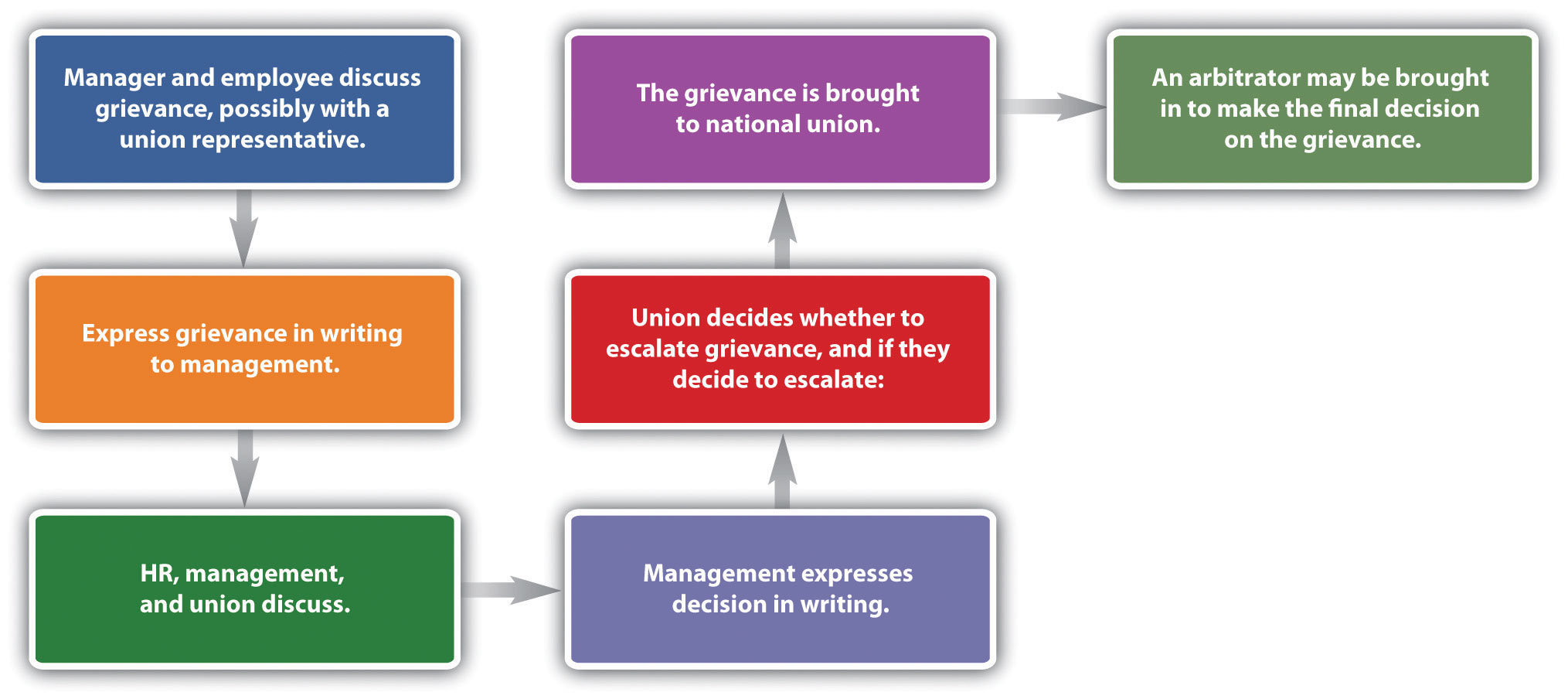The Labour Relations Act (LRA) is not prescriptive as to how this should take place, but it allows the organisation to come up with a process collectively agreed upon between the employee and employer organisations (trade unions).
The grievance procedure lays down the rules and methods for documenting, presenting, and settling workplace disputes. The meeting steps are usually defined in the contract between the union and management.
In this process, the shop steward plays a pivotal role. They are in a position that enables them to influence the climate of an organisation. Their most important influence is the critical function of handling individual grievances.
The following steps are the most common approach to resolving grievances in SA firms. You have to, however, check on timelines agreed upon in your company's collective agreement with labour or in your company's policies.

Bring the grievance to your immediate supervisor.
The first step of the grievance procedure in South Africa is an informal (verbal) resolution with your immediate supervisor. As we all know, there is no need to escalate issues to higher authorities without trying to resolve them at the lowest point first, and this also avoids insubordination issues. Usually, most companies train their supervisors and managers to deal with common workplace issues in a fair and unbiased manner. At this stage, the supervisor should do all that he or she can to resolve the issue normally within 3 working days. This step is also applicable if the supervisor is the source of the problem. For example, you may feel that you are getting picked on by the supervisor or that you are being treated unfairly. In that case, it is important to have a dialogue and try to get a resolution.
Escalate the complaint to the direct report of the supervisor/manager one level higher
If the supervisor cannot resolve the issue, the complaint can be raised at the next level. This could be done informally or formally (although not mandatory) by completing the grievance form that will require the following information:
- The time and date of the event that led to the grievance.
- The name of the person the grievance is against.
- The name of the person filing the grievance.
- The current step of the grievance process.
- A description of the facts of the grievance.
- An indication of what parts of the contract were violated.
- A proposed solution to the grievance.
and the issue should be addressed normally within 10 working days.
Consider Mediation
Mediation is quite crucial in most companies’ grievance procedures. Mostly, companies rely on neutral external parties to mediate on a dissatisfaction issue at work in order to ensure impartiality. Mediation is an option that should be considered at every stage if the resolution reaches a standstill. However, some situations do not warrant the use of mediation such as:
- When mediation is the first step in resolving a grievance, the first step should be an informal dialogue between the aggrieved employee and the immediate supervisor.
- If the complaint involves another employee, then the two employees should dialogue first preferably in the presence of the supervisor.
- When a manager turns to mediation in order to avoid handling a grievance, this especially becomes an issue when the complaint requires an investigation or a final decision about what is right or wrong. In these cases, mediation should be avoided.
- When neither of the parties has the authority to resolve the grievance. Usually, a mediator is brought in for two parties that have the power to settle the matter.
- When mediation will bring about unrealistic expectations.
Escalate the issue to the HR department if the above fails
At this stage, all informality is cast aside and the first step of the official channels is invoked. Here, the employee has to write a grievance letter or fill a grievance form and submit it to the HR department. According to the SA law on grievance procedure under labour laws, the employee has to write this letter within 90 days from the time when the employee became aware of the grievance. This means that any alternative steps that are taken toward a resolution have to be closed within that period. Once the complaint is lodged, the HR and the employer have 30 days to come up with a resolution with the employee. This time period can be extended if the parties come to a mutual agreement (in writing of course) that they should extend the time frame.
Consider appealing at a higher level in case none of the above solutions work.
This is the highest avenue for resolution. If all the other procedures fail, then the employee can go to a higher external grievance body such as the Council for Conciliation, Mediation, and Arbitration (CCMA).
It is important to include a time limit in each of the steps above so that the issue is resolved within a reasonable period. At any stage of the grievance process, the employee is entitled to have representation during all situations to help present the case of the dissatisfied party. The representation can be a fellow employee, an official from your trade union, or anyone else who is properly certified. In the event that the employee does not have access to any of the three parties, the worker can request to bring a different companion to a certain case. Keep in mind that the employer would be well within their rights to deny this request.